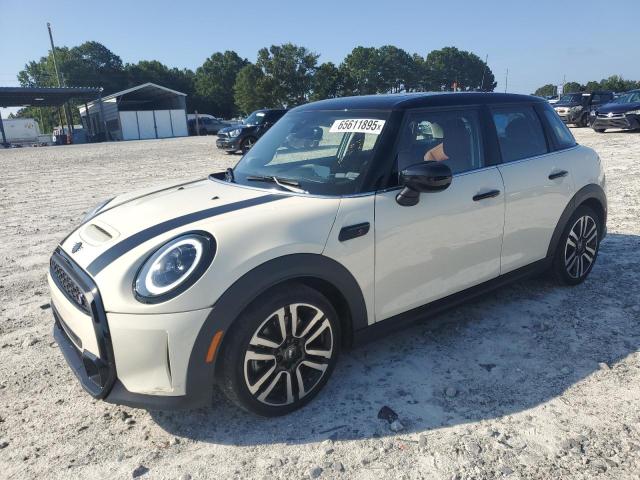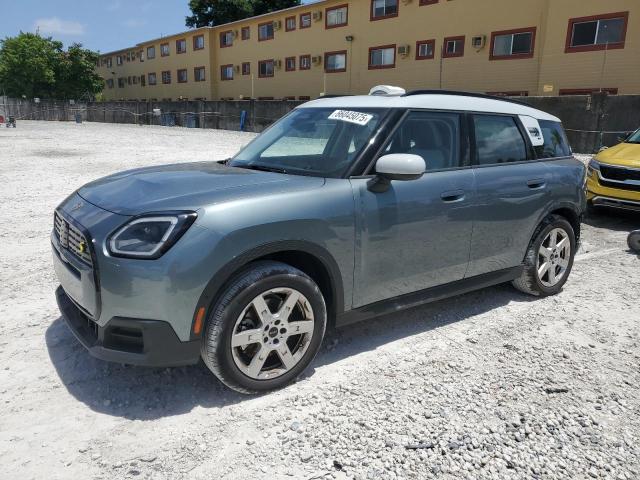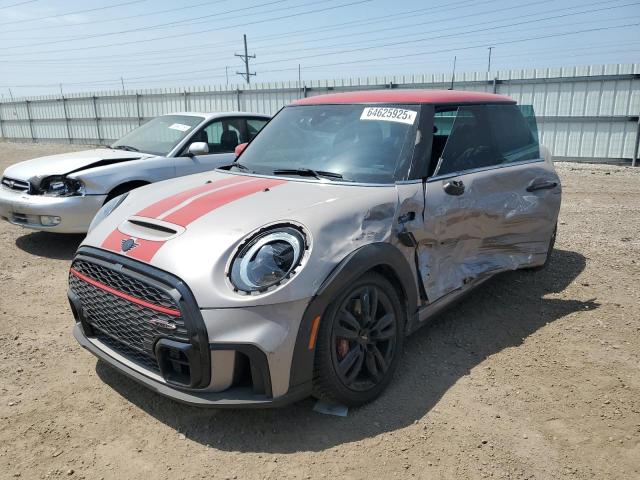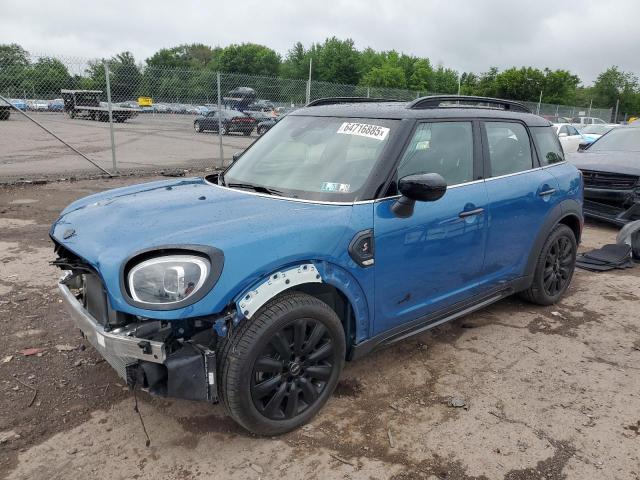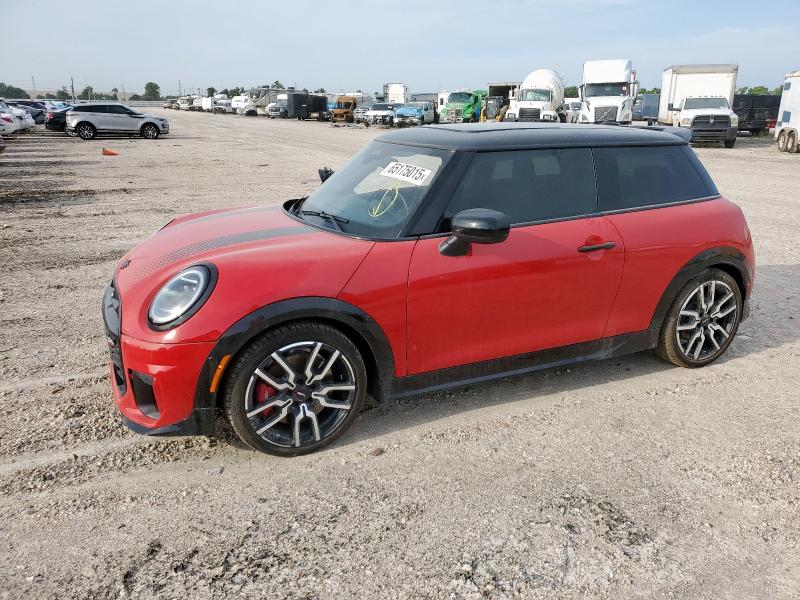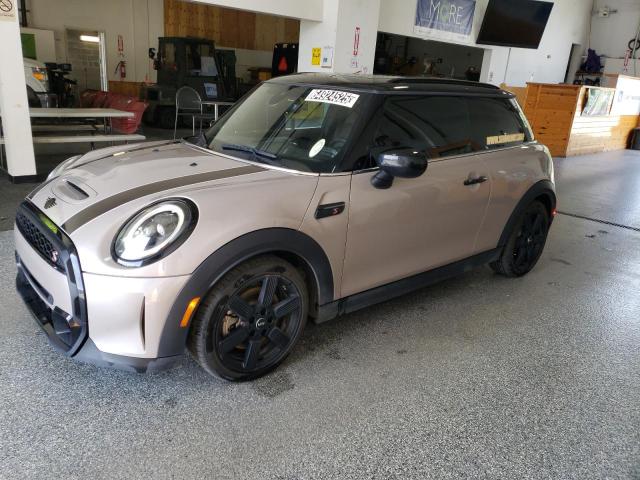2023 MINI HARDTOP | WMW53DH09P2T51901
Lot details
- Sale Date2025-06-09
- Lot Number42108680
- ACV27716 $
- Sale documentSalvage (Florida)
- LocationWest Palm Beach (FL)
- Odometer14,311 miles (23,031 km)
- Primary DamageRIGHT SIDE
- Secondary DamageSUSPENSION
- SellerProgressive Casualty Insurance
Vehicle specifications
5
~$45,000
Engine: 2.0L turbocharged inline-4
Torque: 450 Nm
0–100 km/h: ~5.2 s
The most extreme version of the Mini Cooper lineup, the JCW GP, was designed purely for performance. Powered by a 2.0L turbocharged engine producing 306 hp and 450 Nm of torque, it launched from 0–100 km/h in just 5.2 seconds, making it the fastest production Mini ever built. It was stripped of rear seats and loaded with track-focused enhancements to emphasize its aggressive nature.
Handling was razor-sharp thanks to a stiffer suspension, wider track, and mechanical limited-slip differential. Steering was immediate and responsive, giving it kart-like agility with real precision at high speeds. The GP model was uncompromising, delivering visceral feedback and serious grip through corners.
While some criticized its harsh ride and high price, the GP proved Mini’s engineering team could deliver a genuine performance machine. It wasn't just a city hatch with attitude—it was a purpose-built hot hatch with authentic track credentials and a clear motorsport lineage.
Final Bid Mini Cooper (2023)
$10,600
$12,567
$14,400
Body Styles
The Mini Cooper was available as a 3-door hatchback, 5-door hatchback, and a 2-door soft-top convertible. Each retained the iconic Mini silhouette with its short overhangs, upright windshield, and rounded roofline. The 5-door offered more practicality, while the convertible added lifestyle appeal. The JCW GP was exclusively available as a 3-door hatch with aggressive aero parts, a large rear wing, flared carbon arches, and no rear seats, all to enhance weight balance and aerodynamic performance.
Model Name Meaning (Manufacturer)
The “Cooper” name honors John Cooper, a legendary Formula 1 constructor who turned the classic Mini into a motorsport icon in the 1960s. BMW retained the name to distinguish the brand’s performance-focused trims, while “JCW” (John Cooper Works) represents the highest echelon of Mini performance engineering.
Model Name Meaning (Languages)
“Mini” simply means small—an apt description for the brand’s dimensions and philosophy. “Cooper,” while a surname, is also easily pronounced and remembered across languages. Together, “Mini Cooper” evokes a sense of fun, agility, and heritage, making it one of the most recognizable nameplates in automotive culture.
Body & Interior Colors and Rims
Mini’s color palette was playful yet refined. Standard options included classics like Moonwalk Grey, Pepper White, and British Racing Green, while more vibrant tones like Chili Red, Solaris Orange, and Island Blue stood out in urban settings. Many models offered contrasting roof and mirror cap colors in black, white, or silver, along with bonnet stripes and optional Black Line styling. The JCW GP came exclusively in Racing Grey with red accents and carbon fiber fender flares.
Interior options ranged from sporty cloth upholstery in Carbon Black to premium Mini Yours leather with ambient lighting and unique stitching. Dash and door trims varied from gloss Piano Black to brushed aluminum or Union Jack-themed panels. The JCW GP cabin featured bucket seats, red trim highlights, minimal insulation, and a rear seat delete—all tailored for weight savings and immersion.
Wheels started at 15" on base Coopers and went up to 18" on JCW models. Designs included Crown Spoke, Rail Spoke, and Tentacle Spoke, with finishes in silver, gloss black, or two-tone machined styles. The JCW GP had exclusive 18" lightweight forged wheels with red GP center caps and aero inserts, contributing to its distinctive track-ready look.
Top Expensive Options
- Harman Kardon Premium Audio: $850
- Mini Yours Lounge Leather Interior: $2,000
- Touchscreen Navigation Package: $1,750
- Panoramic Sunroof: $1,200
- Adaptive LED Matrix Headlights: $1,100
- Dynamic Damper Control: $700
- JCW Aero Kit: $2,500
- Union Jack LED Taillights: $500
- 18" Track Spoke Alloy Wheels: $1,300
- JCW Pro Exhaust with Bluetooth Valve Control: $1,700
vs Competitors
The Mini Cooper competed with the VW Golf GTI, Audi A1, Mazda3, and Ford Fiesta ST. It stood out with its unmatched customization options and uniquely fun driving dynamics. While others offered more space or better value, the Mini delivered personality and driving purity in a compact package. The JCW GP, though less practical and more expensive, was the most hardcore option in the segment—more focused than a Golf GTI, more exclusive than a Fiesta ST, and more emotional than an Audi A1. Mini, under BMW’s engineering wing, brought premium-quality touches to a niche performance hatch.
Fun Fact
The JCW GP (F56 generation) was limited to just 3,000 units worldwide. Each car came with 3D-printed aerodynamic fender flares, numbered plaques, and no rear seats. It holds the record as the fastest Mini around the Nürburgring Nordschleife, proving that this tiny hatchback had the heart of a race car.


